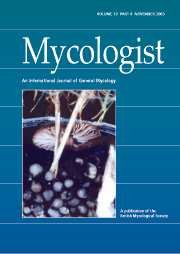Article contents
Pneumocystis carinii: a fungal villain masquerading as a protozoan
Published online by Cambridge University Press: 08 January 2003
Abstract
Pneumocystis is an enigmatic organism, the clinical significance of which remained unrecognised until recently. It is a respiratory pathogen, causing pneumonia which, if untreated, is fatal. For many years its very nature was shrouded in uncertainty, but we now know unequivocally that it is a fungus and an important agent of fungal disease in certain specific settings. Pneumocystis was first seen in the lungs of guinea pigs by Carlos Chagas in 1909, and then in rat lungs by Antonio Carini. Both thought it was a type of trypanosome. In 1912, the Delanoë husband-and-wife team recognised that it was a distinct organism and named it Pneumocystis carinii, on account of the cyst-like morphology of the organism and in honour of Antonio Carini. It was first seen as an infection in humans in the 1920s, among infants with interstitial plasma cell pneumonia.
- Type
- Original Article
- Information
- Copyright
- © 2002 Cambridge University Press
- 1
- Cited by




